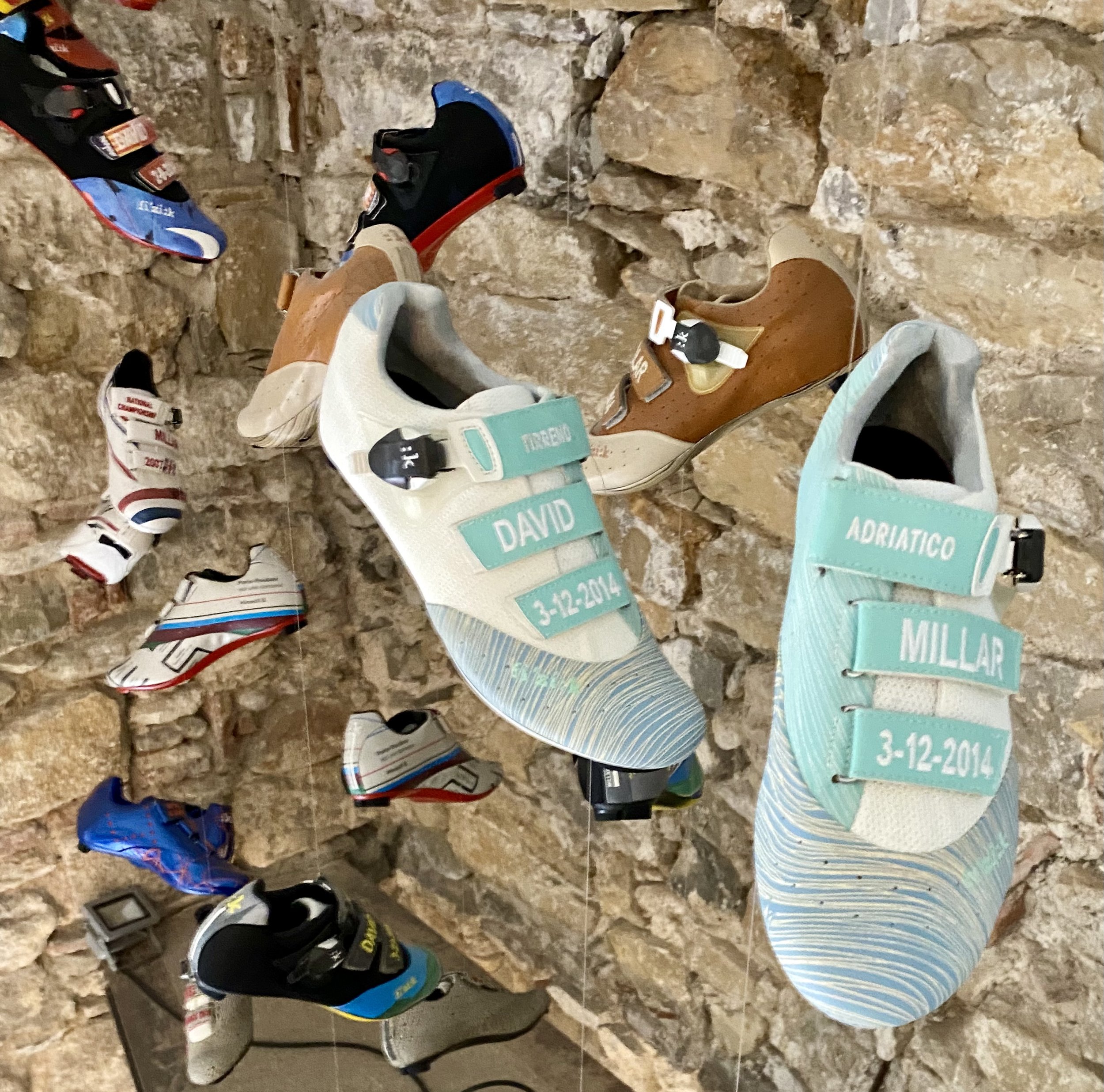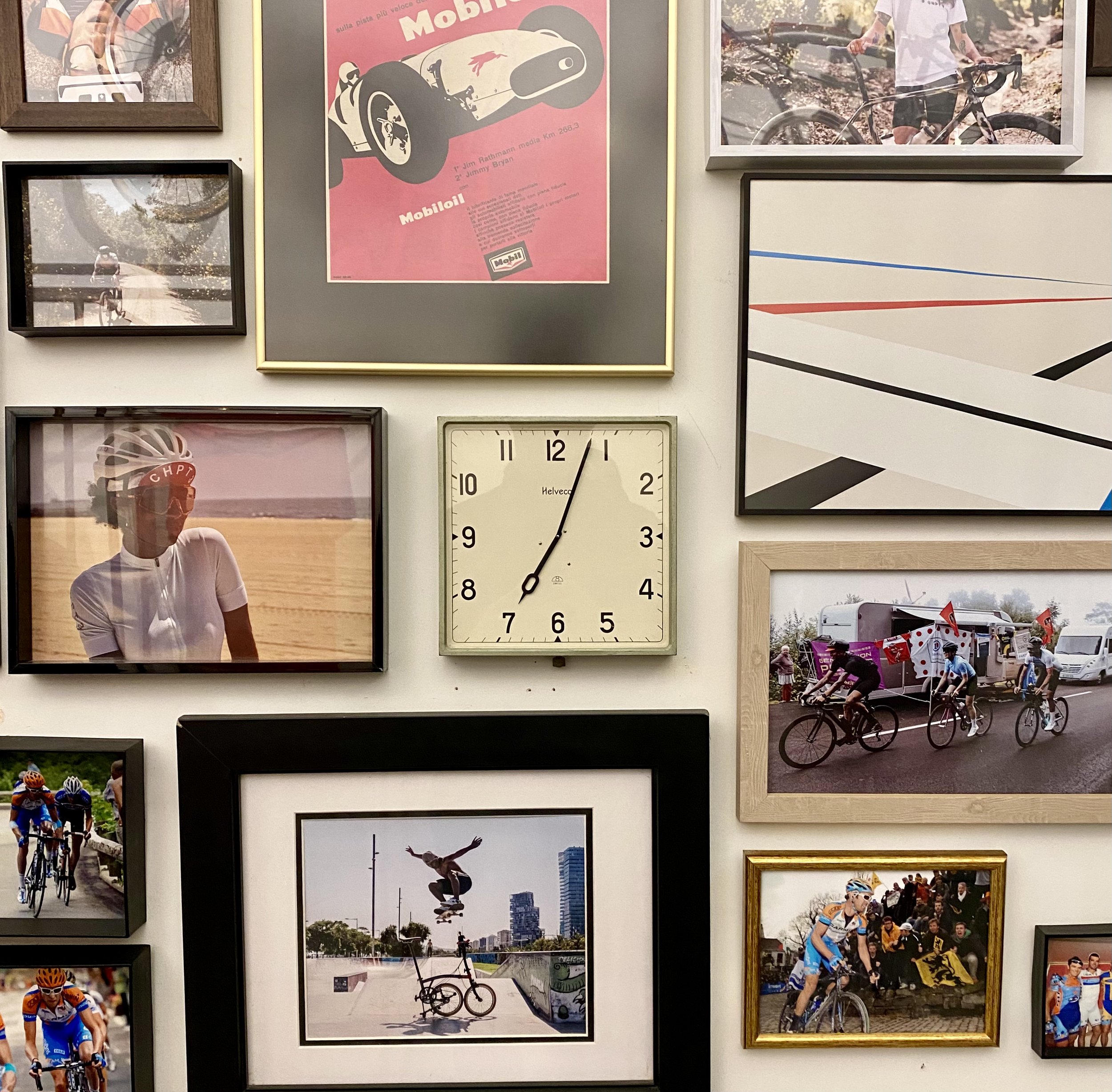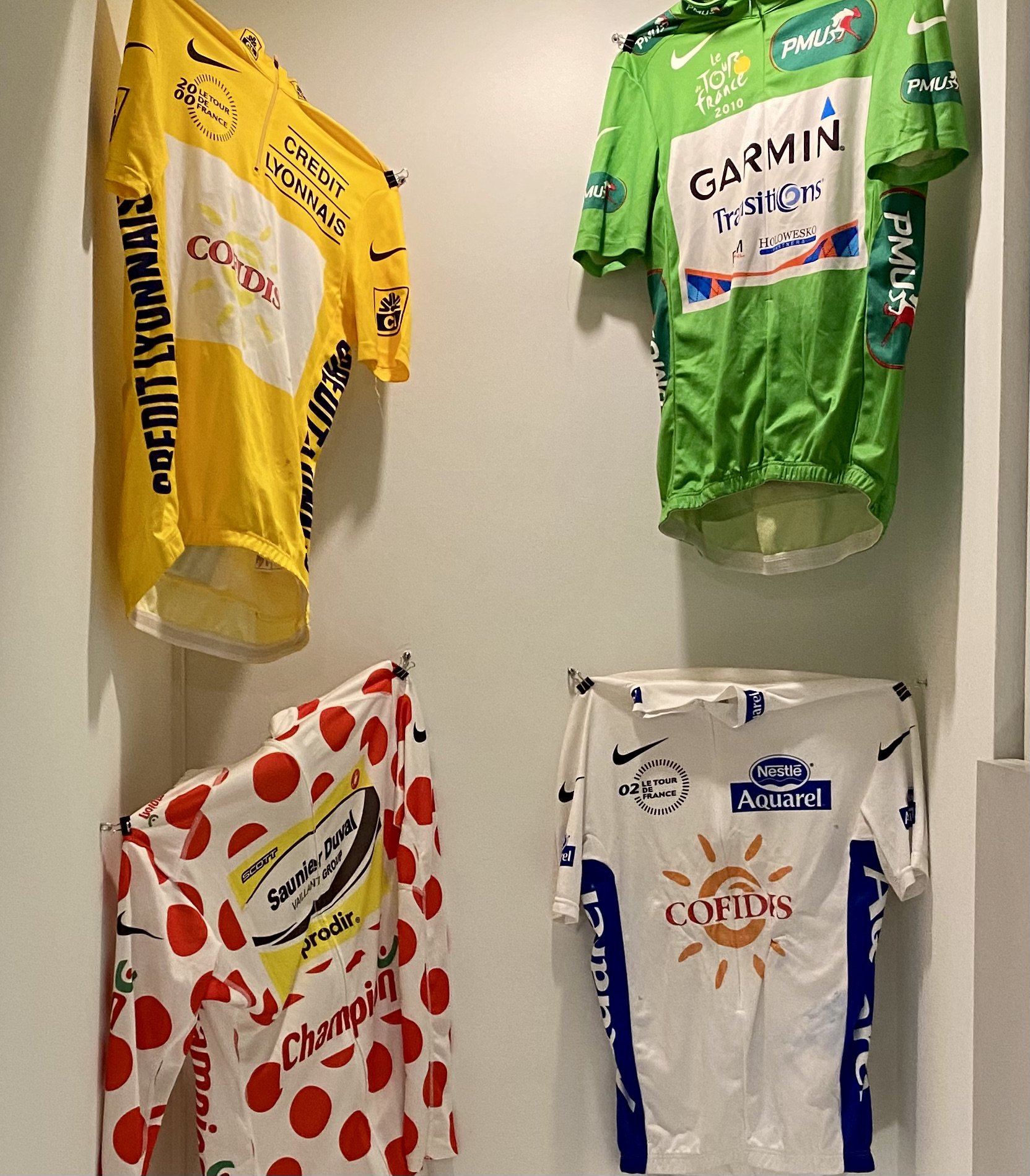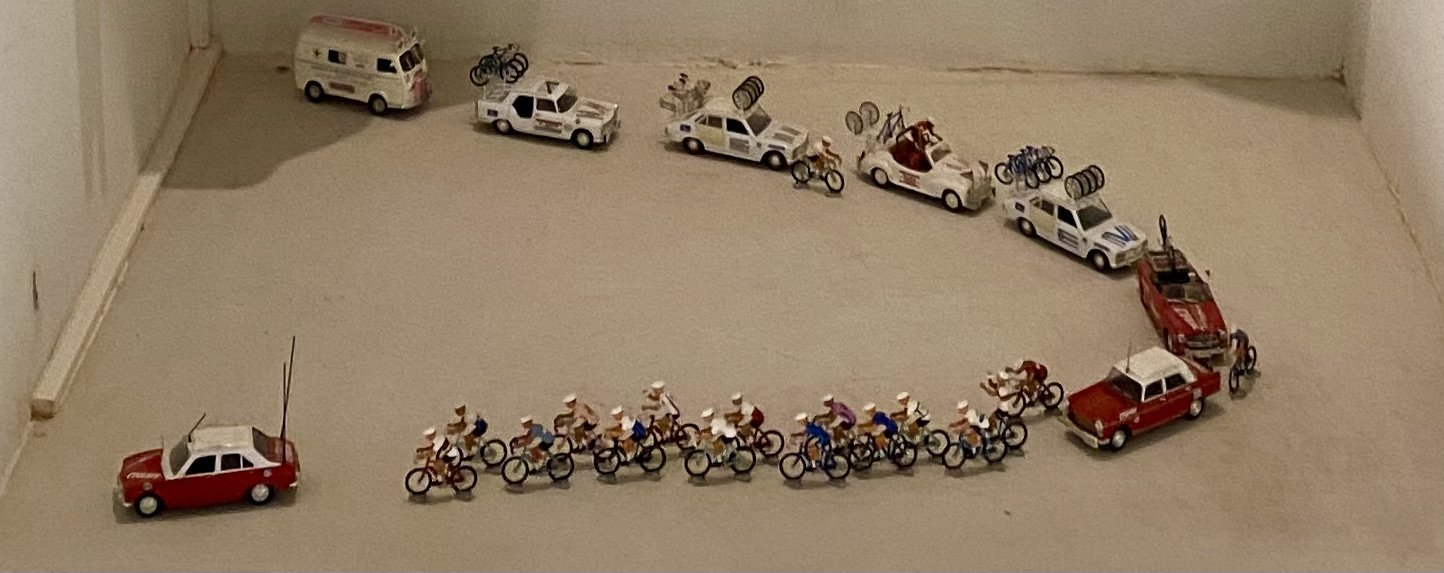~
◎⁃◎
Hello,
Welcome to Connecting Dots, the monthly newsletter on the psychology of innovation leadership by Brett Macfarlane.
What does innovation smell like?
In this edition of Connecting Dots I answer this question through a recent visit to an innovative design studio in Girona, Spain.
Settle in with a ☕️ and have a think about what “the smell of the place” says about your innovation culture.
◎⁃◎
The Smell of Innovation
You can learn a lot about a company and how they innovate in a short visit to their space.
Three weeks ago I buzzed an unmarked door in the Spanish town of Girona. It was six in the evening and people were coming off work. At a cafe to our right, a group of office workers clanked their glasses of vermouth as the door clicked open.
We walked down a narrow nondescript hall and up worn wooden stairs. Nothing indicated it was home to the design studio of high performance and high fashion cycling brand CHPT3 (pronounced chapter three.) The founder and figurehead of CHPT3 is the thoughtful and philosophical champion Scottish cyclist, David Millar.
I was excited because I love visiting design and innovation facilities. Only by being in the space can you see and sense how the work takes shape, or what might be amiss.
A studio or lab is a living artifact of space and people interacting. Interactions that result in new products, services and processes. Some aspects are explicit but much of the work is implicit—hidden out of conscious sight despite its continuous presence.
The experience of CHPT3’s design studio told me a lot about the brand, the company, the people and how they operate. The assessment technique I used is called socioanalytic observation. It seeks to discover the hidden in organizations and social systems. It’s a parallel observation process, meaning at the same time I observe how I respond to the space and I observe how others around me relate to the space.
OK, let me walk you through my experience.
Visiting the CHPT3 Design Studio
The studio is a collection of inter-connected rooms. The physical layout is unique to the timeless medieval walls cocooning the contemporary decor and work implements.
The closely connected rooms link with inconsistent door frames to duck under or pirouette around. Each room contains a discreet aspect of the company. As a brand, CHPT3 to me was a constellation of ideas, aesthetics, campaigns and use cases. Inconsistent yet somehow coherent. The space physically represents this tension.
As an example:
—> I walked past a museum of sporting accomplishments in one room
—> To a business affairs working table in another
—> Above, is an artistic installation of David’s custom race shoes
—> Then I entered a fashion closet upstairs away from the money talk
—> A rest area with soft white furnishing was hidden off to to the side
—> I returned downstairs to discover the most organized and tidy room—a workout space
I found this last room most fascinating. It featured two high spec bikes and computer simulation equipment. It placed sport physically at the heart of the brand, the business and the lifestyle the space represented. Spiritually, I imagined it as a furnace of passion that whirred as staff pushed the limits of new product designs. I wondered if cycling is the means of business, or is the business a means to cycle?
Behind the workout-lab, was a chill-out space with a custom bike-mounted as though art. This highly engineered object seemed to hold desperately onto its mud and dirt from the road. Just as a Jackson Pollack holds onto its paint, defying gravity and the passage of time.
Depending on your perspective, the dirt as an art installation represents taming the chaos outside so it feels close yet safe. Or symbolizes the importance of ensuring the inside doesn’t get too removed from the chaos of competition and real life outside the studio.
Either way, it represented the uncertainty and mess of exploration yet the space was like an oven mitt - you feel the heat but don’t burn.
Interestingly, The entire studio hung over the streets of Girona like a VIP hospitality marquee or broadcast booth. Given Girona’s role as a global hub and home for professional cycling, it was as if they want wanted to be in the middle of the action but from a distance. In it but not of it.
I could peer down at cyclists passing by, freewheels buzzing, as if I was a researcher or police interrogator observing and studying from behind a one-way mirror.
Reflections
This distance I noticed is a common feature of studios trying to create safety amidst the chaos of innovation. The distance can quell fears of getting too involved with and consumed by the outside world in ways that might annihilate their independence or identity. In this case, there seemed just enough distance to be safe enough yet close enough to and open to the outside world.
It’s a healthy and sophisticated tension to negotiate. This distance was an association that came to mind. It could just have been cheap property acquired at an opportune moment or space loaned by a friend. Sometimes a pipe is just a pipe, and nothing more, but more often than not there is more than meets the eye... if only I had more time and could observe David working with his team.
Functionally, I liked the experience of transitioning between the spaces. I’ve always found that everything on one big open floor makes it hard to create boundaries and transitions between functional, cognitive and relational tasks.
The walls gave demarcations between the spaces, roles and functions. The open doors and flowing air enabled integration. Each space gave different representations triggering different responses—in an inspiring and uplifting way.
In many companies, demarcation lines often become fault lines—in perception or in physical representation through closed-off spaces, gatekeepers and formal processes. It can be intentional to activate and unfreeze an organization. Though, if one isn’t careful it can become a front line consumed by battles for control, power and resources.
At the moment of my visit, it felt like the lives of employees flowed between business affairs, design work, sales, company archive, R&D flagships, hospitality zone and chill-out space. Where one spends their time likely reflects their level of formal or informal authority in the company—generalized or specialized roles.
I must confess to envying the space. I wish one day for my practice to have a physical space and experience. I can visualize it and imagine what it feels like to sit down under the morning light with an open window.
Seasonal photography rotates with key themes in our work and injects people’s worldviews (physically and philosophically) into the room. The aroma of fresh coffee is in the air as we chatter away while putting our hands on the wooden work table to start the day. It smells great, like innovation…
I digress, but that’s what a great innovation space does, you dream and make it real.
Learn my about my programs training, coaching and transforming innovators over at www.innovator-coach.com
◎⁃◎












